Aerospace Environmental Challenges for Electrical Insulation and Recent Developments for Electrified Aircraft
Abstract
1. Introduction
2. Electrical Discharges and Extreme Environments
2.1. High Voltage High Altitude Flight
2.2. The Lunar Environment
2.3. High Voltage Operation in Space
3. Aerospace Electrical Insulation Research
3.1. Micro-Multilayer Multifunctional Electrical Insulation (MMEI) System
3.2. Next Generation in Aerospace Electrical Insulation Development
3.3. Hexagonal Boron Nitride for High Voltage Insulation Materials
4. Summary
Author Contributions
Funding
Institutional Review Board Statement
Informed Consent Statement
Data Availability Statement
Acknowledgments
Conflicts of Interest
References
- Anderson, C.D.; Anderson, J. Electric and Hybrid Cars: A history, 2nd ed.; McFarland & Company, Inc.: Jefferson, NC, USA, 2010; p. 268. [Google Scholar]
- Dorrington, G.E. Performance of battery-powered airships. Proc. Inst. Mech. Eng. Part G J. Aerosp. Eng. 2007, 221, 91–104. [Google Scholar] [CrossRef]
- Sahoo, S.; Zhao, X.; Kyprianidis, K. A Review of Concepts, Benefits, and Challenges for Future Electrical Propulsion-Based Aircraft. Aerospace 2020, 7, 44. [Google Scholar] [CrossRef]
- NASA Aeronautics Strategic Implementation Plan 2019 Update; NASA: Washington, DC, USA, 2019; p. 66.
- Madonna, V.; Giangrande, P.; Galea, M. Electrical Power Generation in Aircraft: Review, Challenges, and Opportunities. IEEE Trans. Transp. Electrif. 2018, 4, 646–659. [Google Scholar] [CrossRef]
- Nya, B.H.; Brombach, J.; Schulz, D. Benefits of higher voltage levels in aircraft electrical power systems. In Proceedings of the 2012 Electrical Systems for Aircraft, Railway and Ship Propulsion, Bologna, Italy, 16–18 October 2012; pp. 1–5. [Google Scholar]
- Dunbar, W.G. High Voltage Design Guide. Spacecraft; AFWAL-TR-82-2057 Volume V; U.S. Government: Washington, DC, USA, 1983. [Google Scholar]
- Borghei, M.; Ghassemi, M. Insulation Materials and Systems for More- and All-Electric Aircraft: A Review Identifying Challenges and Future Research Needs. IEEE Trans. Transp. Electrif. 2021, 7, 1930–1953. [Google Scholar] [CrossRef]
- Cotton, I.; Gardner, R.; Schweickart, D.; Grosean, D.; Severns, C. Design considerations for higher electrical power system voltages in aerospace vehicles. In Proceedings of the IEEE International Power Modulator and High Voltage Conference, San Francisco, CA, USA, 6–9 July 2016; pp. 57–61. [Google Scholar]
- Fang, L.; Cotton, I.; Wang, Z.J.; Freer, R. Insulation performance evaluation of high temperature wire candidates for aerospace electrical machine winding application. In Proceedings of the 2013 Electrical Insulation Conference, Ottawa, ON, Canada, 2–5 June 2013; pp. 253–256. [Google Scholar]
- Dunbar, W.G. High Voltage Design Guide. Aircraft; AFWAL-TR-82.-2057 Volume IV; U.S. Government: Washington, DC, USA, 1983. [Google Scholar]
- Khachen, W.; Suthar, J.; Stokes, A.; Dollinger, R.; Dunbar, W.G. Aerospace-specific design guidelines for electrical insulation. IEEE Trans. Electr. Insul. 1993, 28, 876–886. [Google Scholar] [CrossRef]
- NASA. Spacecraft High-Voltage Paschen and Coroana Design Handbook; NASA: Washington, DC, USA, 2016. [Google Scholar]
- Cotton, I.; Nelms, A.; Husband, M. Higher voltage aircraft power systems. IEEE Aerosp. Electron. Syst. Mag. 2008, 23, 25–32. [Google Scholar] [CrossRef]
- Montanari, G.C.; Seri, P.; Naderiallaf, H. A Contribution to Everlasting Electrical Insulation for DC Voltage: PD-Phobic Materials. IEEE Access 2020, 8, 41882–41888. [Google Scholar] [CrossRef]
- Montanari, G.C. Bringing an insulation to failure: The role of space charge. In Proceedings of the 2010 Annual Report Conference on Electrical Insulation and Dielectic Phenomena, West Lafayette, IN, USA, 17–20 October 2010; pp. 1–25. [Google Scholar]
- Naderiallaf, H.; Seri, P.; Montanari, G.C. Investigating Conditions for an Unexpected Additional Source of Partial Discharges in DC Cables: Load Power Variations. Trans. Power Deliv. 2020, 36, 3082–3090. [Google Scholar] [CrossRef]
- Montanari, G.C.; Seri, P.; Bononi, S.F.; Albertini, M. Partial Discharge Behavior and Accelerated Aging Upon Repetitive DC Cable Energization and Voltage Supply Polarity Inversion. IEEE Trans. Power Deliv. 2021, 36, 578–586. [Google Scholar] [CrossRef]
- Dissado, L.; Mazzanti, G.; Montanari, G.C. The incorporation of space charge degradation in the life model for electrical insulating materials. IEEE Trans. Dielectr. Electr. Insul. 1995, 2, 1147–1158. [Google Scholar] [CrossRef]
- NASA. N3-X blended wing body concept. In NASA Turboelectric Concept Called the “N3-X,” with Blended Wing Body; NASA: Washington, DC, USA, 2013. [Google Scholar]
- Sadey, D.; Taylor, L.; Beach, R. Proposal and development of a high voltage variable frequency alternating current power system for hybrid electric aircraft. In Proceedings of the 14th International Energy Conversion Engineering Conference, Salt Lake City, UT, USA, 25–27 July 2016. [Google Scholar]
- Eugene Shin, E.-S.; Scheiman, D.A.; Lizcano, M. Lightweight, durable, and multifunctional electrical insulation material systems for high voltage applications. In Proceedings of the 2018 AIAA/IEEE Electric Aircraft Technologies Symposium (EATS), Cincinnatti, OH, USA, 12–14 July 2018; pp. 1–21. [Google Scholar]
- Lizcano, M. Multilayered functional insulation system (MFIS) for AC power transmission in high voltage hybrid electrical propulsion. In Proceedings of the EnergyTech, Cleveland, OH, USA, 31 October 2017. [Google Scholar]
- Rui, R.; Cotton, I. Impact of low pressure aerospace environment on machine winding insulation. In Proceedings of the IEEE International Symposium on Electrical Insulation, San Diego, CA, USA, 6–9 June 2010; pp. 1–5. [Google Scholar]
- Sili, E.; Koliatene, F.; Cambronne, J.P. Pressure and temperature effects on the Paschen curve. In Proceedings of the 2011 Annual Report Conference on Electrical Insulation and Dielectric Phenomena, Cancun, Mexico, 16–19 October 2011; pp. 464–467. [Google Scholar]
- NASA/TM—2005-213629., T.W.K. Electric Power System Technology Options for Lunar Surface Missions; NASA: Washington, DC, USA, 2005.
- Khan, Z.; Vranis, A.; Zavoico, A.; Freid, S.; Nevada, B.; Manners, B. Power System Concepts for the Lunar Outpost: A Review of the Power Generation, Energy Storage, Power Management and Distribution (PMAD) System Requirements and Potential Technologies for Development of the Lunar Outpost. AIP Conf. Proc. 2006, 813, 1083. [Google Scholar] [CrossRef]
- Thomas, G.; Granger, M.; Csank, J.; Gardner, B. Establishing a lunar surface power grid. In Proceedings of the 2022 Conference on Advanced Power Systems for Deep Space Exploration (APS4DS), Virtual, 30 August 2022. [Google Scholar]
- NASA Manned Lunar Observatory Concept. Available online: https://www.nasa.gov/centers/glenn/multimedia/artgallery/lunar_observatory.html (accessed on 12 August 2022).
- ASTM B8; Standard Specification for Concentric-Lay-Stranded Copper Conductors, Hard, Medium-Hard, or Soft. ASTM: West Conshohocken, PA, USA, 2017.
- Rickman, S.; Johnson, K.; Maghsoudi, E.; Slenski, G.; Furst, B.; Wentzel, D.; Bautista, A.; Nelson, E. Re-Architecting the NASA Wire Derating Approach for Space Flight Applications; NASA: Washington, DC, USA, 2018. [Google Scholar]
- DeMinico, M.; Csank, J.; Thomas, G. Micro-grid Definition and Interface Converter for Planetary Surfaces (MIPS) Technical Assessment Periodic Review (TAPR); NASA: Washington, DC, USA, 2022. [Google Scholar]
- Jordan, A.P.; Stubbs, T.J.; Wilson, J.K.; Schwadron, N.A.; Spence, H.E. Dielectric breakdown weathering of the Moon’s polar regolith. J. Geophys. Res. Planets 2015, 120, 210–225. [Google Scholar] [CrossRef]
- Yousif, E.; Haddad, R. Photodegradation and photostabilization of polymers, especially polystyrene. SpringerPlus 2013, 2, 398. [Google Scholar] [CrossRef]
- Stubbs, T.J.; Vondrak, R.R.; Farrell, W.M. Impact of dust on lunar exploration. In Solar System; NASA: Washington, DC, USA, 2007. [Google Scholar]
- Khan-Mayberry, N. The Lunar Environment: Determining the Health Effects of Exposure to Moon Dusts. 2017. Available online: https://ntrs.nasa.gov/api/citations/20070006527/downloads/20070006527.pdf (accessed on 15 March 2021).
- LUNAR RECONNAISSANCE ORBITER: Temperature Variation on the Moon; NASA: Washington, DC, USA, 2013.
- Williams, D.R. Moon Fact Sheet. Available online: https://nssdc.gsfc.nasa.gov/planetary/factsheet/moonfact.html (accessed on 15 March 2021).
- Colwell, J.E.; Batiste, S.; Horányi, M.; Robertson, S.; Sture, S. Lunar surface: Dust dynamics and regolith mechanics. Rev. Geophys. 2007, 45. [Google Scholar] [CrossRef]
- Oudayer, P.; Monnin, L.; Matéo-Vélez, J.-C.; Hess, S.L.G.; Sarrailh, P.; Murat, G.; Roussel, J.-F. Multiscale Modeling of Dust Charging in Simulated Lunar Environment Conditions. IEEE Trans. Plasma Sci. 2019, 47, 3710–3716. [Google Scholar] [CrossRef]
- Jordan, A.P.; Stubbs, T.J.; Shusterman, M.L.; Izenberg, N.R.; Wilson, J.K.; Hayne, P.O.; Schwadron, N.A.; Spence, H.E. How dielectric breakdown may contribute to the global weathering of regolith on the moon. Icarus 2019, 319, 785–794. [Google Scholar] [CrossRef]
- Halekas, J.S.; Delory, G.T.; Lin, R.P.; Stubbs, T.J.; Farrell, W.M. Lunar Prospector observations of the electrostatic potential of the lunar surface and its response to incident currents. J. Geophys. Res. Space Phys. 2008, 113. [Google Scholar] [CrossRef]
- Jordan, A.P.; Stubbs, T.J.; Wilson, J.; Schwadron, N.A.; Spence, H.E. The rate of dielectric breakdown weathering of lunar regolith in permanently shadowed regions. Icarus 2017, 283, 352–358. [Google Scholar] [CrossRef]
- Jordan, J.L.; Heymann, D.; Lakatos, S. Inert gas patterns in the regolith at the Apollo 15 landing site Geochim. Cosmochim. Acta 1974, 38, 65–78. [Google Scholar] [CrossRef]
- Eberhardt, P.; Geiss, J.; Graf, H.; Grögler, N.; Krähenbühl, U.; Schwaller, H.; Schwarzmüller, J.; Stettler, A. Trapped Solar Wind Noble Gases, Kr81/Kr Exposure Ages and K/Ar Ages in Apollo 11 Lunar Material. Science 1970, 167, 558–560. [Google Scholar] [CrossRef]
- Richard, D.T.; Glenar, D.A.; Stubbs, T.J.; Davis, S.S.; Colaprete, A. Light scattering by complex particles in the Moon’s exosphere: Toward a taxonomy of models for the realistic simulation of the scattering behavior of lunar dust. Planet. Space Sci. 2011, 59, 1804–1814. [Google Scholar] [CrossRef]
- NASA. Is There an Atmosphere on the Moon? Available online: https://www.nasa.gov/mission_pages/LADEE/news/lunar-atmosphere.html (accessed on 22 June 2022).
- Anderson, P.C. Characteristics of spacecraft charging in low Earth orbit. J. Geophys. Res. Space Phys. 2012, 117. [Google Scholar] [CrossRef]
- NASA. A Lunar Nuclear Reactor. Available online: https://sservi.nasa.gov/articles/a-lunar-nuclear-reactor/ (accessed on 14 July 2022).
- Cassady, R.J.; Frisbee, R.H.; Gilland, J.H.; Houts, M.G.; LaPointe, M.R.; Maresse-Reading, C.M.; Oleson, S.R.; Polk, J.E.; Russell, D.; Sengupta, A. Recent advances in nuclear powered electric propulsion for space exploration. Energy Convers. Manag. 2008, 49, 412–435. [Google Scholar] [CrossRef]
- Dyson, R.; Rao, D.V.; Duchek, M.; Harnack, C.; Scheidegger, R.; Mason, L.; Juhasz, A.; Rodriguez, L.; Leibach, R.; Geng, S.; et al. Nuclear electric propulsion brayton power conversion working fluid considerations. In Proceedings of the Nuclear and Emerging Technologies for Space (NETS-2022), Cleveland, OH, USA, 8–12 May 2022; p. 8. [Google Scholar]
- NASA. Nuclear Propulsion Could Help Get Humans to Mars Faster. Available online: https://www.nasa.gov/directorates/spacetech/nuclear-propulsion-could-help-get-humans-to-mars-faster (accessed on 22 March 2022).
- National Academies of Sciences, Engineering and Medicine. Space Nuclear Propulsion for Human Mars Exploration; The National Academies Press: Washington, DC, USA, 2021; p. 92. [Google Scholar]
- FAA. 4.1.2 Space Environemnts. Available online: https://www.faa.gov/about/office_org/headquarters_offices/avs/offices/aam/cami/library/online_libraries/aerospace_medicine/tutorial/media/III.4.1.2_The_Space_Environment.pdf (accessed on 18 August 2022).
- AS50881G; Wiring Aerospace Vehicle. SAE International: Warrendale, PA, USA, 2019.
- Bettinger, C. What Is TKT Insulated Wire? 2017. Available online: https://www.interconnect-wiring.com/blog/tkt-insulated-wire/#:~:text=This%20wire%20has%20a%20tape,aircraft%20since%20the%20early%201990s (accessed on 22 August 2022).
- DuPont. DuPont Kapton: Summary of Properties; DuPont: Wilmington, DE, USA, 2022; p. 20. [Google Scholar]
- Hähner, T.; Rybsky, P.; Cotton, I.; Lowndes, R.; Albert, L.; Thomas, C.; Dinculescu, S.; Teyssedre, G. A Round-Robin test study of partial discharge inception voltage in aeronautic cables. In Proceedings of the 2020 International Symposium on Electrical Insulating Materials, Tokyo, Japan, 13–17 September 2020. [Google Scholar]
- 6—Introduction to fluoropolymers. In Introduction to Fluoropolymers; Ebnesajjad, S., Ed.; William Andrew Publishing: New York, NY, USA, 2013; pp. 63–89. [Google Scholar]
- Shin, E. High Performance Multilayer Insulation Composite for High Voltage Applications. U.S. Patent 2019/0326034 A1, 24 October 2019. [Google Scholar]
- Shin, E.-S.E. Development of high voltage micro-multilayer multifunctional electrical insulation (MMEI) system. In Proceedings of the 2019 AIAA/IEEE Electric Aircraft Technologies Symposium, Indianapolis, IN, USA, 22–24 August 2019; pp. 1–14. [Google Scholar]
- Shin, E.-S.E. Progresses in developing micro-multilayer multifunctional electrical insulation (MMEI) system for high voltage applications. In Proceedings of the American Association for Advances in Functional Materials (AAAFM)-UCLA International Conference, Los Angeles, CA, USA, 18–20 August 2021. [Google Scholar]
- Williams, T.; Nguyen, B.; Fuchs, W. Polyphenylsulfone-hBN composite insulation. In Proceedings of the IEEE 3rd International Conference on Dielectrics (ICD), Valencia, Spain, 5–31 July 2020; pp. 541–545. [Google Scholar]
- Williams, T.S.; Nguyen, B.; Woodworth, A.; Kelly, M. Engineered interfaces in extruded polyphenylsulfone-boron nitride composite insulation. In Proceedings of the IEEE 4th International Conference on Dielectrics (ICD), Palermo, Italy, 3–7 July 2022; pp. 94–97. [Google Scholar]
- Hung, C.-C.; Hurst, J.; Santiago, D.; Lizcano, M.; Kelly, M. Highly thermally conductive hexagonal boron nitride/alumina composite made from commercial hexagonal boron nitride. J. Am. Ceram. Soc. 2017, 100, 515–519. [Google Scholar] [CrossRef]
- Hung, C.-C.; Hurst, J.; Santiago, D.; Lizcano, M.; Kelly, M. Synthesis and Thermal Conductivity of Exfoliated Hexagonal Boron Nitride/Alumina Ceramic Composite; NASA: Washington, DC, USA, 2017. [Google Scholar]
- Hung, C.-C.; Hurst, J.; Santiago, D.; Rogers, R.B. Exfoliation of Hexagonal Boron Nitride via Ferric Chloride Intercalation; NASA: Washington, DC, USA, 2014; p. 28. [Google Scholar]
- Hung, C.; Hurst, J.B.; Lizcano, M.; Santiago, D. Compositions and Methods Associated with Intercalating and Exfoliating a Sample. U.S. Patent 10,000,419 B1, 19 June 2018. [Google Scholar]
- Ivey, C.; Alfares, A.; He, J. Hybrid-electric aircraft propulsion drive based on SiC triple active bridge converter. In Proceedings of the 2021 IEEE/IAS Industrial and Commercial Power System Asia (I&CPS Asia), Chengdu, China, 18–21 July 2021; pp. 431–436. [Google Scholar]
- Dannier, A.; Brando, G.; Spina, I.; Raciti, A.; Rizzo, S.A.; Susinni, G. High frequency converter topologies suitable for more electric aircraft. In Proceedings of the 2018 AEIT International Annual Conference, Bari, Italy, 3–5 October 2018; pp. 1–6. [Google Scholar]
- Quinn, P.; Willis, S. Measuring Techniques and Challenges of Moving to Variable Frequency Power; Curtiss-Wright: Davidson, NC, USA, 28 February 2019. [Google Scholar]
- Tseng, J.-K.; Tang, S.; Zhou, Z.; Mackey, M.; Carr, J.M.; Mu, R.; Flandin, L.; Schuele, D.E.; Baer, E.; Zhu, L. Interfacial polarization and layer thickness effect on electrical insulation in multilayered polysulfone/poly(vinylidene fluoride) films. Polymer 2014, 55, 8–14. [Google Scholar] [CrossRef]
- Saleem, M.Z.; Akbar, M. Review of the Performance of High-Voltage Composite Insulators. Polymers 2022, 14, 431. [Google Scholar] [CrossRef]
- Li, T.-L.; Hsu, S.L.-C. Enhanced Thermal Conductivity of Polyimide Films via a Hybrid of Micro- and Nano-Sized Boron Nitride. J. Phys. Chem. B 2010, 114, 6825–6829. [Google Scholar] [CrossRef]
- Zhang, W.; Zuo, H.; Zhang, X.; Wang, J.; Guo, L.; Peng, X. Preparation of Graphene-Perfluoroalkoxy Composite and Thermal and Mechanical Properties. Polymers 2018, 10, 700. [Google Scholar] [CrossRef]
- IEEE/IEC-62539-2007; Guide for the Statistical Analysis of Electrical Insulation Breakdown Data. IEEE/IEC: Piscataway, NJ, USA, 2007.
- Roy, S.; Zhang, X.; Puthirath, A.B.; Meiyazhagan, A.; Bhattacharyya, S.; Rahman, M.M.; Babu, G.; Susarla, S.; Saju, S.K.; Tran, M.K.; et al. Structure, Properties and Applications of Two-Dimensional Hexagonal Boron Nitride. Adv. Mater. 2021, 33, 2101589. [Google Scholar] [CrossRef]
- Hung, C.C.; Hurst, J. Methods for Intercalating and Exfoliating Hexagonal Boron Nitride. U.S. Patent 10,005,668 B1, 26 June 2018. [Google Scholar]
- Hod, O. Graphite and Hexagonal Boron-Nitride have the Same Interlayer Distance. Why? J. Chem. Theory Comput. 2012, 8, 1360–1369. [Google Scholar] [CrossRef]
- Gautam, C.; Chelliah, S. Methods of hexagonal boron nitride exfoliation and its functionalization: Covalent and non-covalent approaches. RSC Adv. 2021, 11, 31284–31327. [Google Scholar] [CrossRef] [PubMed]
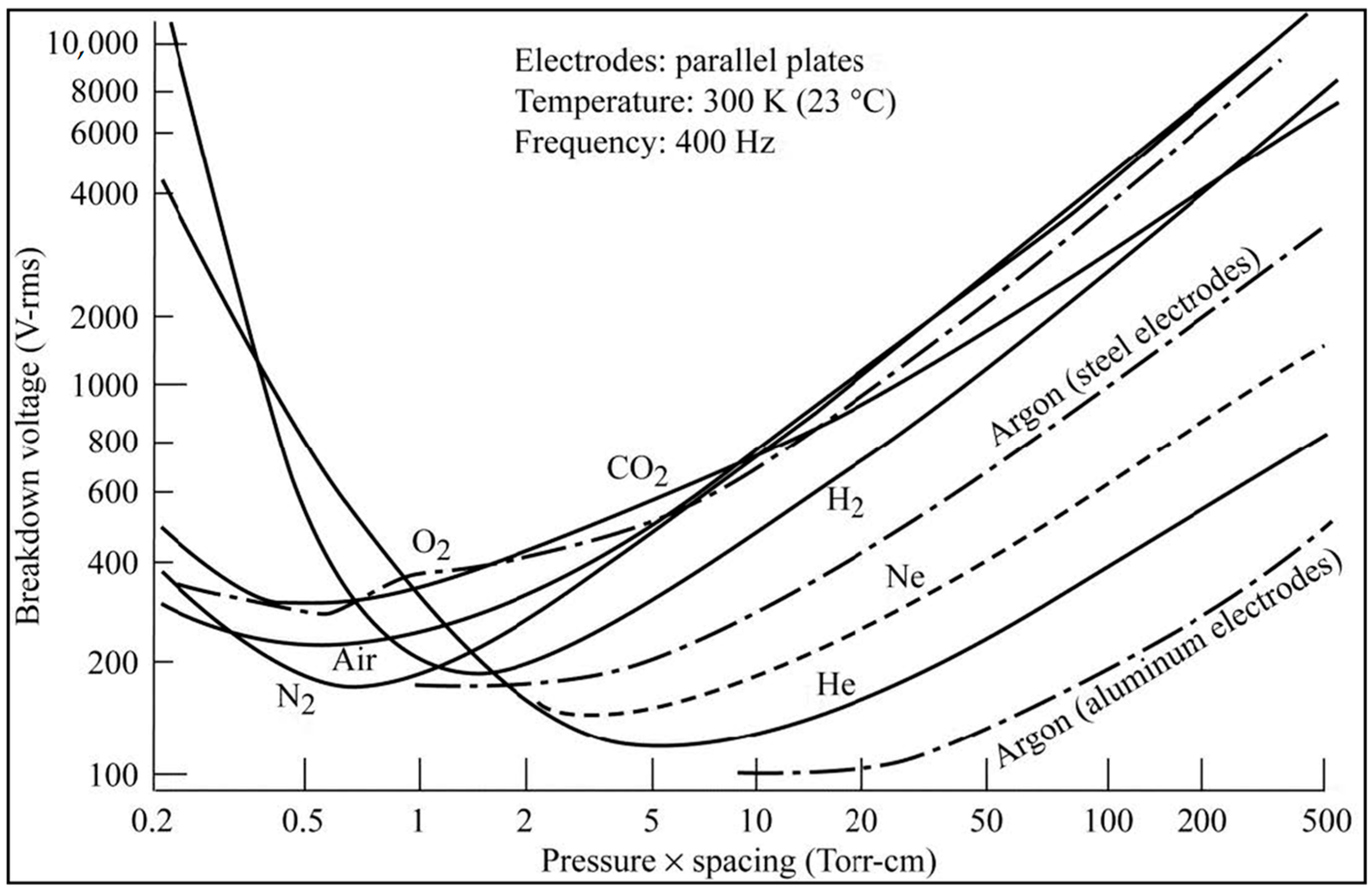
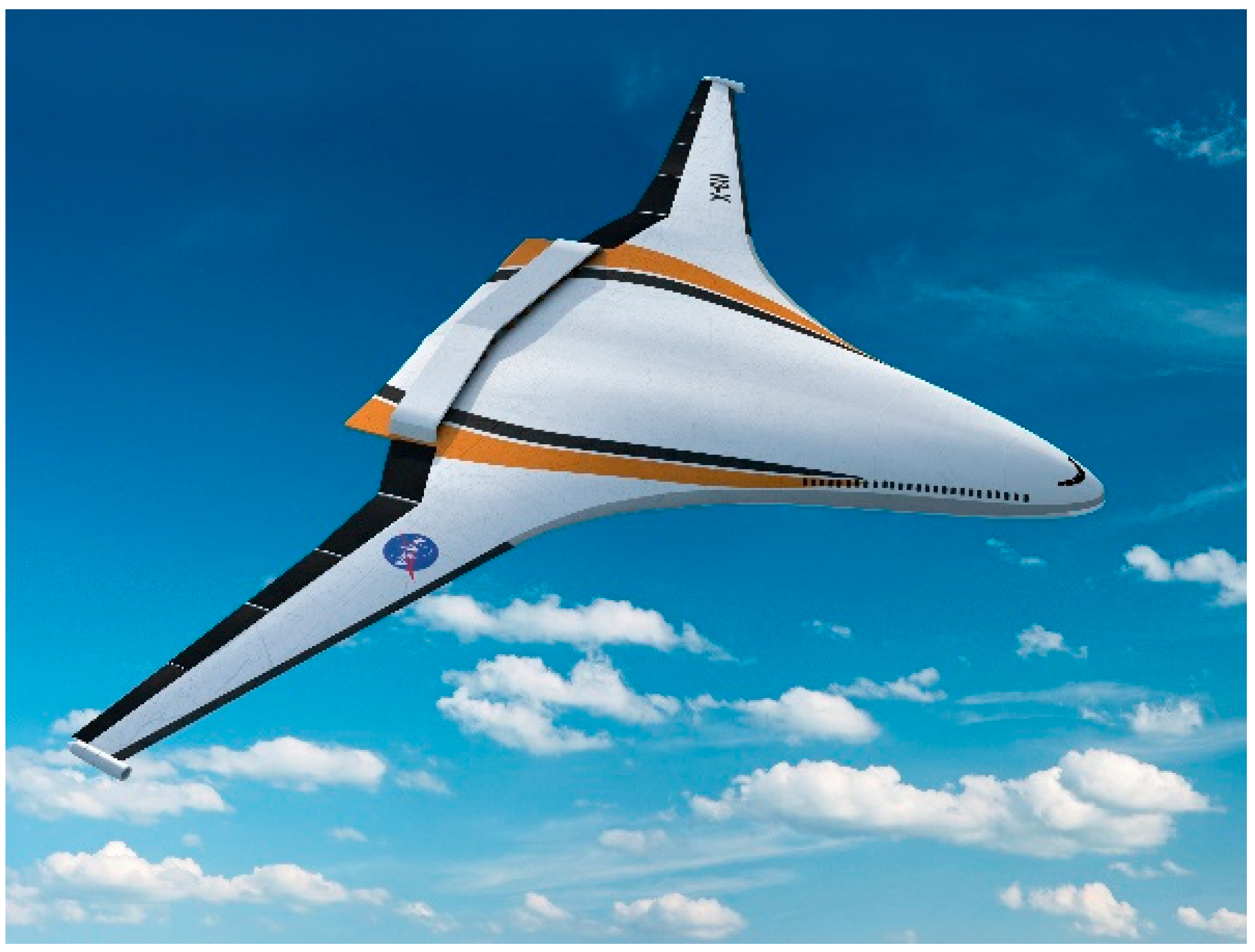
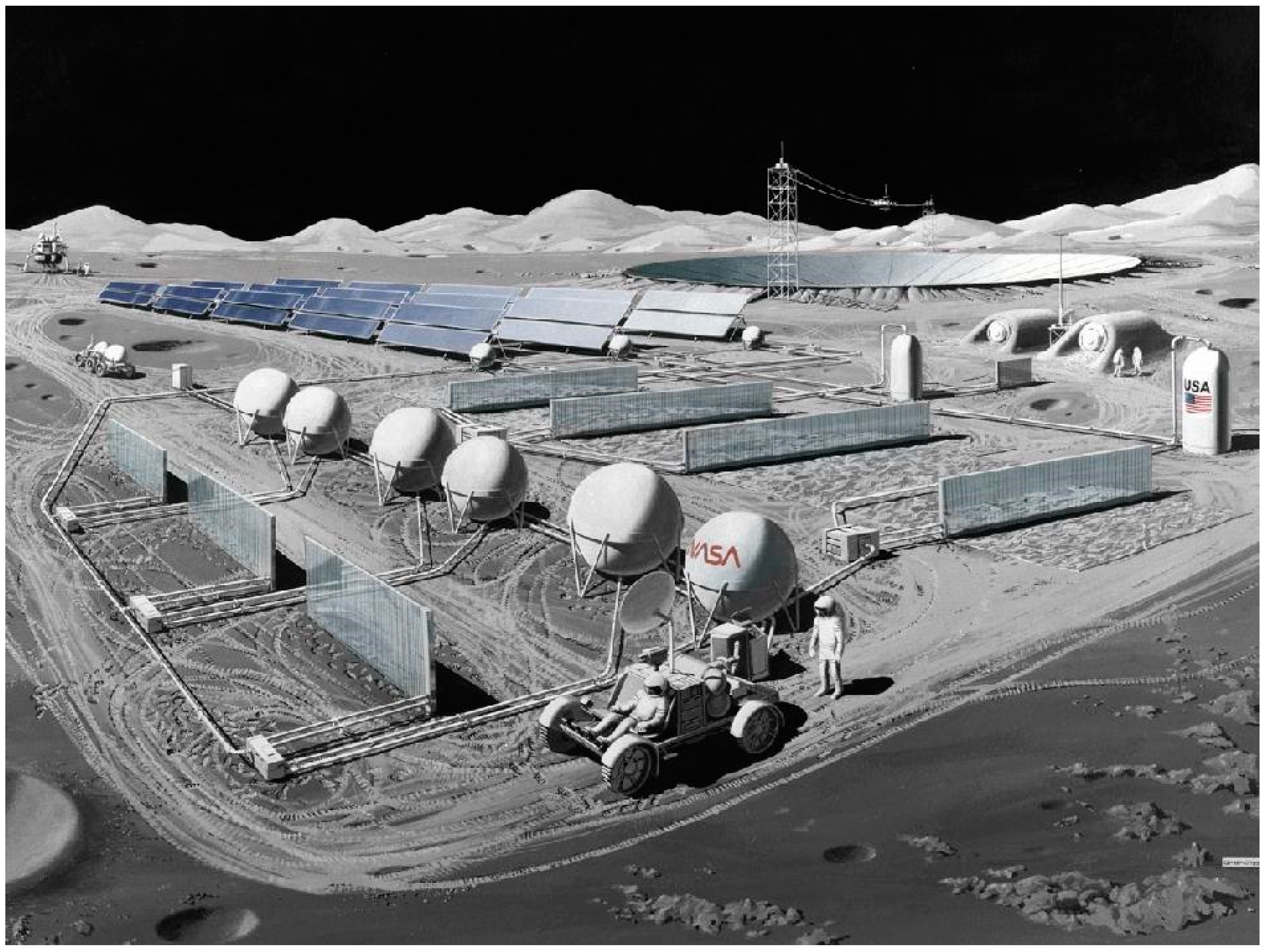
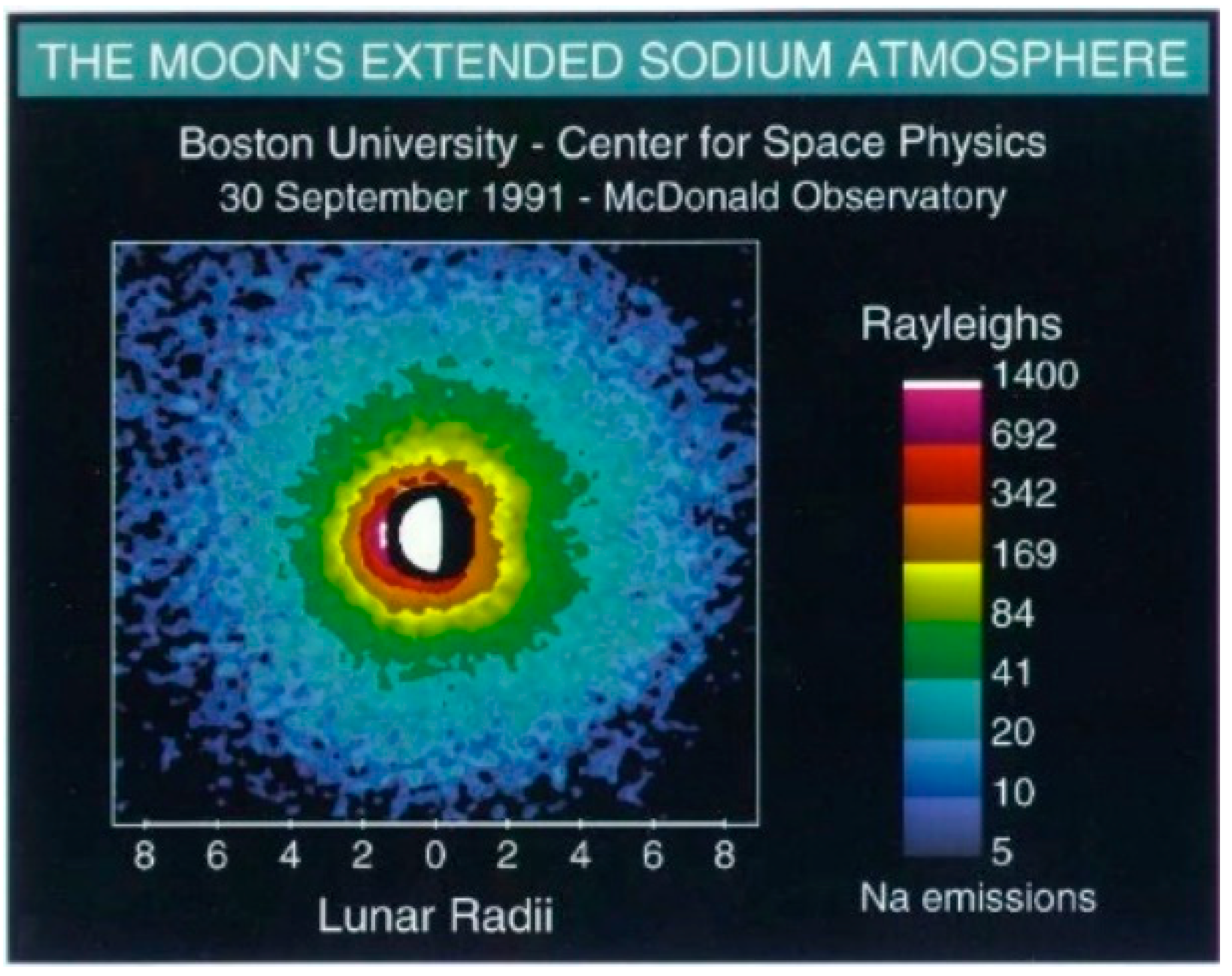

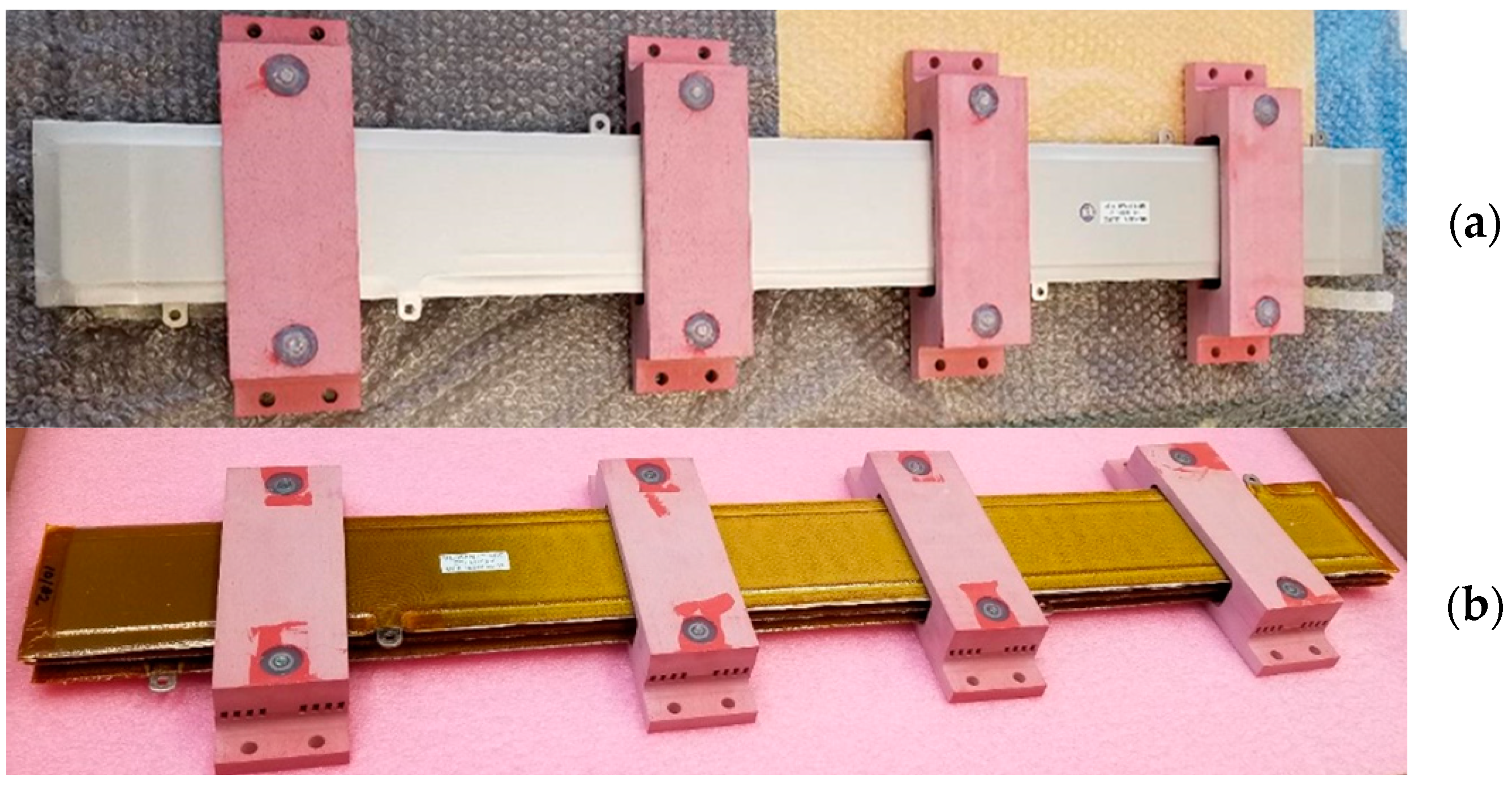
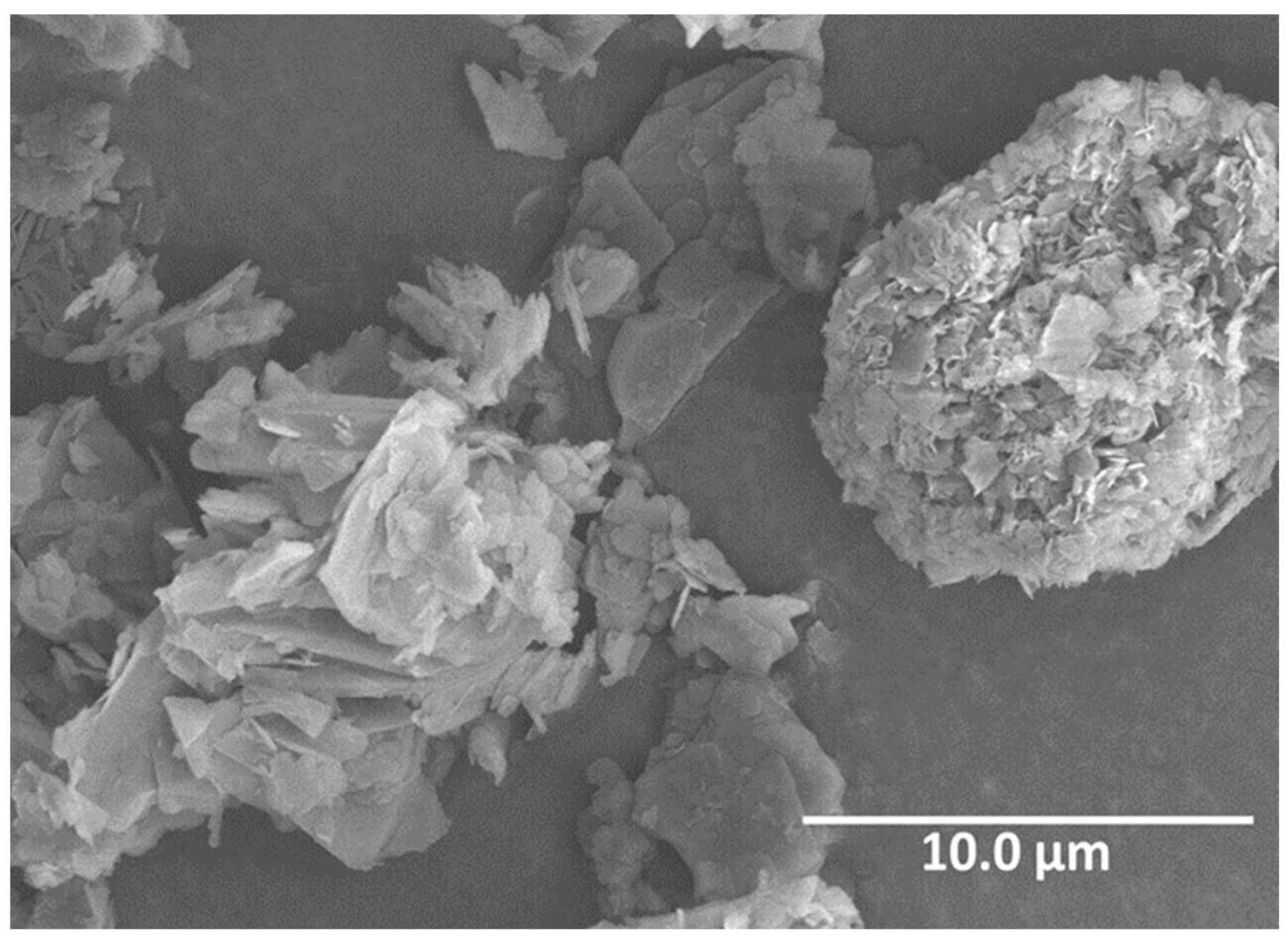

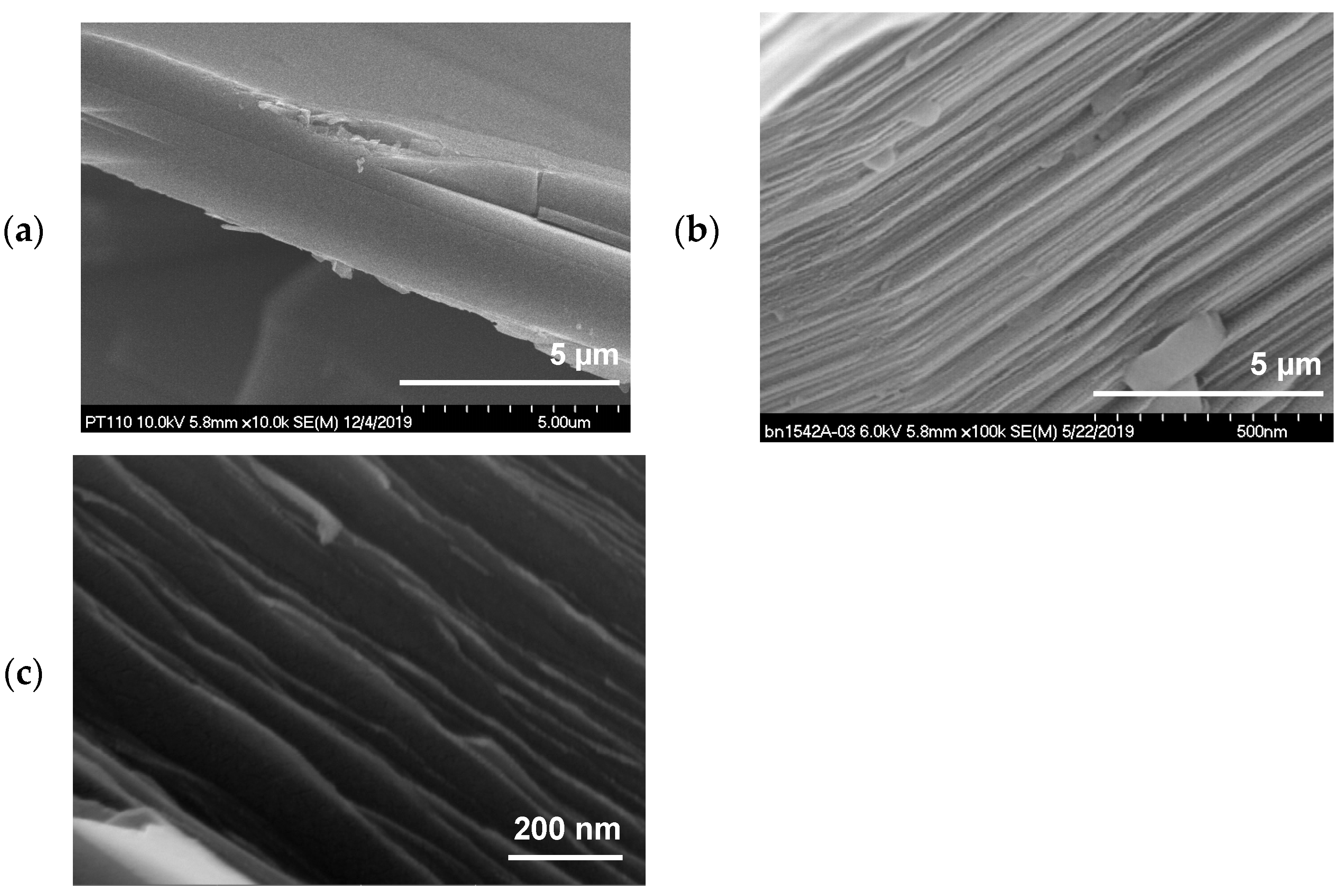
| Sample Names | Number of Samples | Thickness (mm) | Mean BDS (kV/mm) | (kV/mm) | |
|---|---|---|---|---|---|
| Virgin PPSU | 13 | 0.17 ± 0.034 | 36.17 | 41.31 | 3.54 |
| 0.6 wt% NanoBN | 13 | 0.20 ± 0.023 | 48.67 | 54.03 | 4.6 |
| 2.7 wt% micro/nanoBN | 10 | 0.14 ± 0.019 | 44.68 | 47.68 | 6.79 |
| 12.4 wt% micro/nanoBN | 10 | 0.10 ± 0.026 | 55.48 | 58.5 | 9.92 |
Publisher’s Note: MDPI stays neutral with regard to jurisdictional claims in published maps and institutional affiliations. |
© 2022 by the authors. Licensee MDPI, Basel, Switzerland. This article is an open access article distributed under the terms and conditions of the Creative Commons Attribution (CC BY) license (https://creativecommons.org/licenses/by/4.0/).
Share and Cite
Lizcano, M.; Williams, T.S.; Shin, E.-S.E.; Santiago, D.; Nguyen, B. Aerospace Environmental Challenges for Electrical Insulation and Recent Developments for Electrified Aircraft. Materials 2022, 15, 8121. https://doi.org/10.3390/ma15228121
Lizcano M, Williams TS, Shin E-SE, Santiago D, Nguyen B. Aerospace Environmental Challenges for Electrical Insulation and Recent Developments for Electrified Aircraft. Materials. 2022; 15(22):8121. https://doi.org/10.3390/ma15228121
Chicago/Turabian StyleLizcano, Maricela, Tiffany S. Williams, Euy-Sik E. Shin, Diana Santiago, and Baochau Nguyen. 2022. "Aerospace Environmental Challenges for Electrical Insulation and Recent Developments for Electrified Aircraft" Materials 15, no. 22: 8121. https://doi.org/10.3390/ma15228121
APA StyleLizcano, M., Williams, T. S., Shin, E.-S. E., Santiago, D., & Nguyen, B. (2022). Aerospace Environmental Challenges for Electrical Insulation and Recent Developments for Electrified Aircraft. Materials, 15(22), 8121. https://doi.org/10.3390/ma15228121






